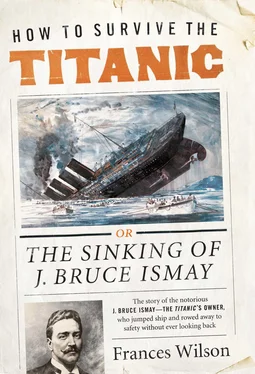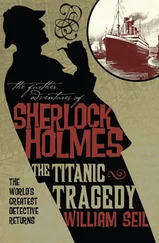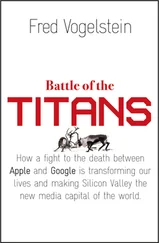The Britannia, the first Cunarder to be launched, was celebrated as the last word in shipbuilding and in 1842 Charles Dickens and his wife booked their passage to Boston on board the new liner. The ‘stateroom’, Dickens recorded, was not at all the ‘room of state’ pictured in the brochure, with its almost ‘interminable perspective’. It was instead ‘an utterly impracticable, thoroughly hopeless, and profoundly preposterous box’ into and out of which he and his wife had to twine themselves ‘like serpents’. Their luggage could no more be ‘got in at the door… than a giraffe could be persuaded or forced into a flower-pot’. The sumptuous bed they had seen in the illustration in the booking office was a ‘very thin mattress’ spread over ‘a most inaccessible shelf’ like a ‘surgical plaster’. Reading in bed was not possible — at least, Dickens found, it was not possible to tell what it was you were reading — and nor was it possible to get away from the ‘extraordinary compound of strange smells’ which accompanied sea life.
Steam, it was believed, would never successfully replace sail. Sail might be slow but it was at least a proven means of transport; by contrast the behaviour of these new-fangled steam wagons was terrifyingly unpredictable and uncertain. Should they break down in mid-ocean, where were the engineers to do the repairs? The fact that the first steamships still carried sails suggested to passengers that the shipbuilders themselves lacked trust in these vessels. Harland & Wolff were to change all this: their reputation for efficiency and expertise meant that the shift from sail to steam, from wood to iron, and eventually from iron to steel, was made possible. ‘All through this great shipyard,’ wrote Bram Stoker in an article on Harland & Wolff, ‘the biggest and finest and best established in the world, there is omnipresent evidence of genius and forethought; of experience and skill; of organisation complete and triumphant.’ The ‘perfection of the business organisation’ was made apparent to Stoker when he watched the workers clock off at 5.30 on a Friday afternoon and queue to collect their wages. All 16,000 men were paid ‘within ten minutes’. 2
The first liner built for the White Star Line by Harland & Wolff was the Oceanic, followed, in under two and a half years, by the Atlantic, Baltic, Republic, Adriatic, Celtic, Gallic and Belgic. When the Oceanic was launched, in 1870, she made news by being the first ship to exceed in length Brunel’s Great Eastern, which had laid the transatlantic cable and which, at 673 feet, was then the biggest moving object in the world. In A Floating City, a novel published in 1867, Jules Verne described crossing the Atlantic on the Great Eastern. His narrator is less interested in seeing America than in seeing the ship itself which, he says, was ‘something more than a ship, it was… a section detached from English soil which, having crossed the sea, united itself to the American continent’. The Great Eastern, wrote Verne, was a ‘microcosm’ carrying ‘a little world along with it’, containing ‘all the instincts, follies, and passions of the human race’. 3
The Oceanic, with berths for 2,000 people, carried only sixty-four passengers on her maiden voyage from Liverpool to New York in March 1871, but it was widely agreed that she was the finest vessel on the Atlantic route. Sleek and elegant, she looked more like a yacht than a steamer. The Oceanic was the first modern ocean liner: Thomas Ismay had set a new standard in shipbuilding which every steamship company then followed. It took seven days for her to reach New York, but speed was less important to Ismay Senior than splendour and comfort; his achievement was to build steady ships and thus bring to an end the misery of sea travel. Not only did White Star passengers have no reason to dread their crossing; their journey was now so restful that they were in no hurry to arrive. The designers at Harland & Wolff devised a plan not previously tried before: they placed the first-class staterooms amidships where there was least motion, rather than near the stern where the ship’s heaving and vibration were at their greatest. This way they prevented the condition described by Dickens of ‘not ill, but going to be’, and the compound of strange smells from the galley of which Dickens also complained could additionally be avoided. Staterooms were now double the size and with larger portholes; before fitting the ship out, William Pirrie, a young draftsman of genius employed at the shipyard, was sent on a tour of English and Continental hotels in order to observe their finest features. Where Samuel Cunard was dour and efficient, Thomas Ismay was decadent and efficient; and when the Baltic created a new speed record and the White Star won a rival contract to transport the mails to America, the Cunard Company was its only competitor.
Brunel’s Great Eastern might be a city, but White Star liners were utopias. In Travelling Palaces, published in 1913 — seventy years after Dickens travelled on the Britannia and one year after the Titanic went down — J. A. Fletcher described the new luxury liners as idealised communities whose citizens shared a common goal. While the average home was still without adequate lighting or convenient sanitation, luxury liners provided both in excess. Policemen and courts of law were unnecessary to this new society because ‘the state, as epitomised by the liner, takes charge of the passenger’. 4
Under Thomas Ismay’s government, those in first-class would want for nothing, every need was anticipated, every desire satisfied. There were no crowds, no queues. The romance of the sea associated with sails and wooden hulls might be a thing of the past, but Ismay Senior replaced it with a fantasy of a different sort: the sea became an occasion for a party; his voyages provided passengers with unlimited pleasure, abundance and excess. Life on board was a series of concerts, dinners, dances and fancy-dress balls. The dining room now stretched from one side of the ship to the other, allowing passengers enough space to select their own company; they ate not on rows of bolted-down benches but at separate tables provided with a la carte menus and elegant, free-standing chairs. Couples could, for the first time in transatlantic history, dine a deux in a room divided by partitions which removed them from the site of the central table where the Captain entertained his guests and surveyed his clientele. They might then walk under the shelter of a promenade deck rather than be buffeted about by wind and spray. Love could blossom, business associations form. Oil lamps soon replaced gas and electric bells were installed in every room so that the steward, instead of being shouted for, could be signalled at the press of a button; rows of imitation windows provided the illusion of natural light.
Most importantly, the vastness of the White Star liners made it possible to feel alone and passengers were able to enjoy the contemplation which comes from travel. With coal fires in the grates and curtains on the glass windows, the self-contained staterooms allowed families to imagine they were in their own apartments. Should they prefer not to join in the entertainments, they could cross the Atlantic in complete isolation.
Disaster struck in 1873, when the White Star steamship Atlantic ran out of coal on her way to New York and, changing course to refuel in Halifax, hit a rock. Most of the lifeboats were swept away and 250 lives — a third of the passengers — were lost. It was the worst peacetime shipwreck to be recorded at sea, and the press had a field day when the subsequent inquiry found the White Star Line negligent. It was a trauma from which Thomas Ismay would never fully recover and were it not for his determination to forge ahead — he always maintained that the ship’s coal supply had been sufficient — the company might have been destroyed by the verdict.
Читать дальше












